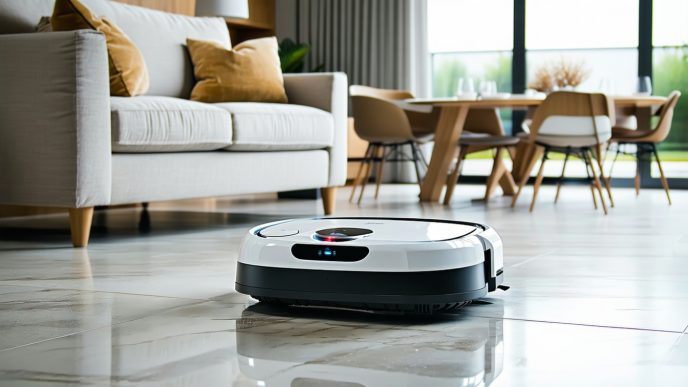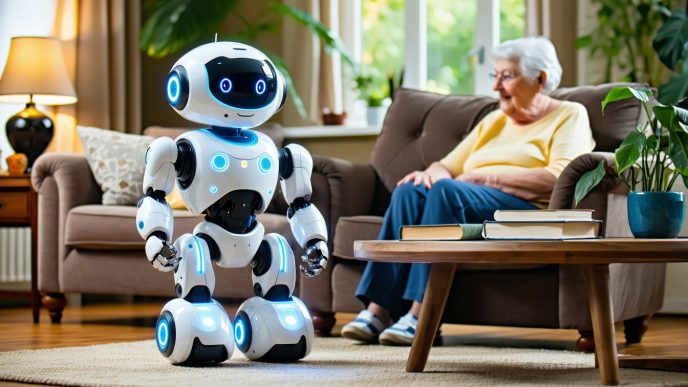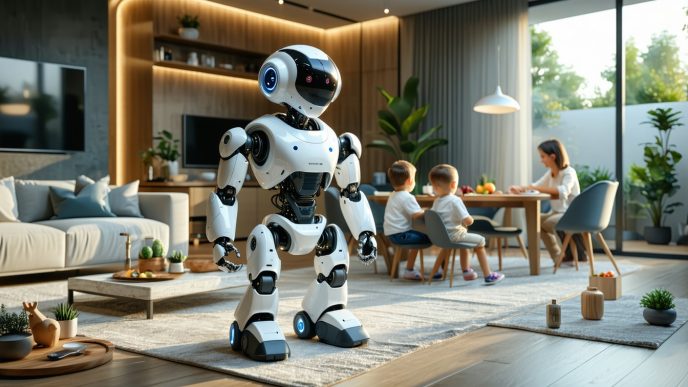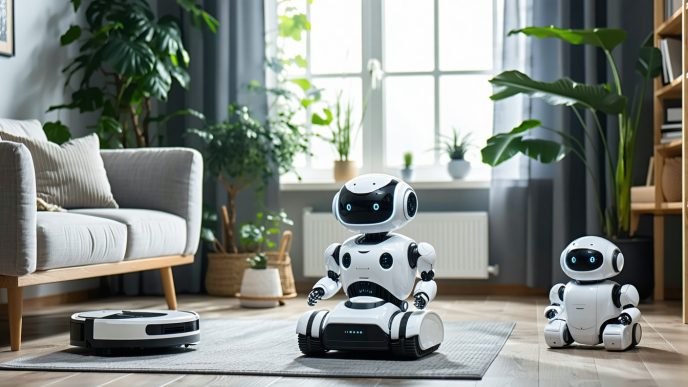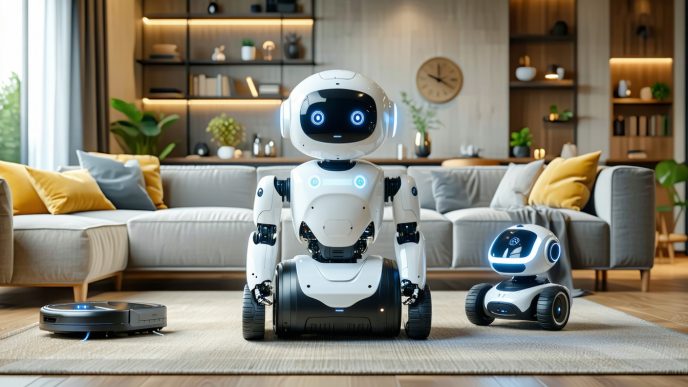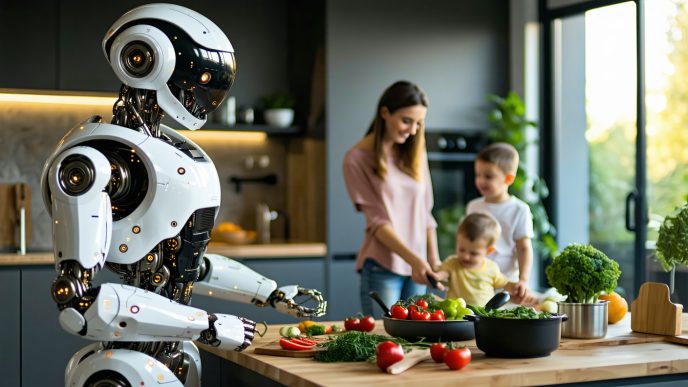The Role of Robots in Providing Emotional Support
Understanding the Need for Emotional Support Robots
Emotional support robots fulfill a critical role in today’s society, particularly for families seeking to enhance their quality of life. These robots help individuals cope with feelings of loneliness, anxiety, and stress. The demand for emotional support has grown significantly due to various factors, including rapid urbanization, changes in family structures, and the increasing prevalence of mental health issues.
Many families find that companion robots can offer comfort and companionship, bridging the gap when human interaction is insufficient. These robots can provide a sense of presence and connection, especially for vulnerable populations, including children and the elderly. Understanding the importance of emotional support robots is essential for homeowners and families looking to integrate technology into their daily lives. For examples of robots tailored to these needs, check out our article on best robots for seniors at home.
Benefits of Robots in Enhancing Play and Engagement
Companion robots have multiple benefits when it comes to enhancing play and engagement, contributing positively to family dynamics. These robots can bring joy, stimulate creativity, and foster interactive experiences that strengthen relationships among family members. The following table outlines some key benefits:
| Benefit | Description |
|---|---|
| Enhanced Interaction | Robots can encourage dialogue and play, making family time more engaging. |
| Emotional Companionship | They provide support and companionship, helping alleviate feelings of loneliness. |
| Learning Opportunities | Interactive robots can teach skills through play, promoting cognitive development in children. |
| Stress Reduction | Engaging with robots can help reduce anxiety and stress levels among family members. |
Many families have noted improvements in children’s emotional well-being as they interact with these robots, often embracing them as friends rather than just machines. These benefits make companion robots a noteworthy consideration for families exploring the best companion robots for families that offer practical assistance and emotional support. For more information on different types of robots appropriate for home environments, you can check our resources on best overall robots for home use.
Types of Companion Robots
Companion robots come in various types, each designed to meet different needs and preferences. This section explores the main categories of companion robots: social robots, interactive robots, and educational robots.
Social Robots
Social robots are specifically designed to engage with users on an emotional and social level. They use natural language processing and facial recognition to interact and respond to individuals, creating a sense of companionship. Social robots are ideal for families as they can foster communication, encourage interaction among family members, and even help reduce feelings of loneliness in children and seniors.
| Feature | Description |
|---|---|
| Interaction Style | Conversational, emotional engagement |
| Target Users | Families, children, elderly |
| Key Benefits | Reduces loneliness, enhances emotional well-being |
Interactive Robots
Interactive robots focus on providing entertainment and engagement through various activities. These robots can play games, respond to commands, and adapt to users’ preferences, making them suitable companions for family fun. They often come equipped with sensors that allow them to react to their environment, making playtime dynamic and captivating.
| Feature | Description |
|---|---|
| Interaction Style | Game-oriented, responsive |
| Target Users | Families, children |
| Key Benefits | Enhances social interaction, provides entertainment |
Educational Robots
Educational robots are designed to help children learn through play and exploration. These robots often include programmable features that promote STEM (science, technology, engineering, mathematics) education, making them an excellent choice for families interested in education. They can teach coding, problem-solving, and critical thinking skills, enhancing learning experiences at home.
| Feature | Description |
|---|---|
| Interaction Style | Learning-based, programmable |
| Target Users | Families with children |
| Key Benefits | Supports education, encourages curiosity |
These different types of companion robots cater to diverse family needs and preferences. For homeowners and families seeking to enhance their daily life, understanding options can help select the most suitable robot. For further insights on reliable robots, visit our article on best overall robots for home use.
Features to Look for in Companion Robots
When considering the best companion robots for families, several key features should be prioritized. Evaluating communication abilities, interactive capabilities, and programming and customization options can greatly enhance the overall experience of using these robots in daily life.
Communication Abilities
Effective communication is essential for any companion robot. A robot with robust communication abilities can engage users in meaningful conversations, respond to questions, and provide emotional support. Key aspects to look for include:
| Feature | Description |
|---|---|
| Voice Recognition | Ability to understand and respond to spoken commands. |
| Language Options | Multiple language support for diverse households. |
| Emotional Responsiveness | Ability to detect and respond to user emotions and sentiments. |
These features help create a more personal connection between the robot and family members, making interactions more enjoyable and engaging.
Interactive Capabilities
Interactive capabilities allow companion robots to engage users actively, fostering a sense of play and connection. Factors to consider include:
| Feature | Description |
|---|---|
| Touch Sensitivity | Reacts to being touched or pet, enhancing immersion in interaction. |
| Game Playing | Ability to play games and engage in activities that stimulate cognitive and emotional development. |
| Movement and Mobility | Ability to move around the home, interact physically with users, and navigate obstacles. |
Robots equipped with interactive capabilities offer more than just companionship; they can stimulate creativity and provide entertainment for families.
Programming and Customization Options
A versatile companion robot should offer programming and customization options that allow families to tailor the robot’s functions to their needs. Important features can include:
| Feature | Description |
|---|---|
| Customizable Commands | Ability to set specific commands for unique user interactions. |
| App Integration | Compatibility with mobile applications for added functionality and remote control. |
| Scheduled Activities | Programming robots to perform tasks or engage at specific times of the day. |
These capabilities enable families to create a more personalized experience, ensuring the robot fits well into their lifestyle. Families interested in learning about various robots can explore our articles on best overall robots for home use and best value robots for home buyers.
Best Companion Robots for Families
In the evolving landscape of home technology, companion robots stand out as valuable assets for families. They enhance daily life, provide emotional support, and foster engagement, making them great additions to any household. Below are three of the best companion robots for families, featuring their unique capabilities and attributes.
Robot A
Robot A is designed for interactive play and emotional engagement. Families appreciate its ability to respond to voice commands and perform various activities, making it an entertaining companion for children and adults alike.
| Feature | Description |
|---|---|
| Interaction Type | Voice and touch responsive |
| Age Suitability | 3 years and up |
| Battery Life | Up to 8 hours |
| Special Abilities | Storytelling, games, and educational assistance |
Families find Robot A particularly beneficial for younger children, as it helps develop social skills and encourages learning through play. More insights on interactive robots can be found in our article on best overall robots for home use.
Robot B
Robot B focuses on emotional support and companionship. This robot provides comfort during tough times and promotes mental well-being by engaging its users in meaningful conversations and activities.
| Feature | Description |
|---|---|
| Interaction Type | Conversational AI |
| Age Suitability | All ages |
| Battery Life | 10 hours |
| Special Abilities | Emotion recognition, nurturing responses |
Families often use Robot B as a companion for elderly family members or children needing emotional support. For those interested in humanoid capabilities, see more about such robots in our section on best humanoid robots for home assistance.
Robot C
Robot C excels in educational engagement, making it perfect for families that prioritize learning as part of play. It incorporates various learning modules tailored to different age groups, supporting both children and adults.
| Feature | Description |
|---|---|
| Interaction Type | Educational quizzes and activities |
| Age Suitability | 5 years and up |
| Battery Life | 6 hours |
| Special Abilities | Customizable learning paths, progress tracking |
With its focus on education, Robot C is a great option for families looking to enhance learning and engagement in their daily lives. Explore various options, including robots specialized for smaller living spaces, in our other article on best robots for apartment living.
By understanding the capabilities of these companion robots, families can make informed decisions that align with their needs and preferences. Each option brings unique benefits that can improve daily life, making them worthy investments for family dynamics.
Integrating Robots into Daily Life
Successfully integrating companion robots into daily life involves not only understanding their capabilities but also establishing clear boundaries and knowing how to maximize their benefits.
Establishing Boundaries
Setting boundaries with companion robots is essential for maintaining a harmonious environment. Clear guidelines help individuals, especially children, understand how and when to interact with these robots. It is crucial to determine specific times for engagement and the types of activities allowed.
Some helpful tips for establishing boundaries include:
- Designate Areas for Interaction: Identify specific spaces where the robot can operate effectively without disrupting daily routines.
- Set Usage Times: Establish time slots when the robot can engage with family members for educational or recreational activities.
- Explain Robot Limitations: Educate family members about what the robot can or cannot do. This understanding prevents unrealistic expectations and promotes positive experiences.
An example of guidelines might be structured as follows:
| Boundary Aspect | Guidelines |
|---|---|
| Interaction Areas | Living room, playroom |
| Usage Times | Weekdays 5 PM – 7 PM |
| Activity Limits | Educational games, storytelling |
Maximizing the Benefits of Companion Robots
To derive maximum value from companion robots, families should embrace their features and functionalities. The following strategies can enhance engagement and interaction:
- Encourage Collaborative Play: Utilize the robot for joint activities where family members can work alongside it to promote teamwork and collaboration.
- Incorporate Learning Activities: Make use of the robot’s educational capabilities to support children’s learning through fun and interactive methods.
- Customize Interaction: Many robots allow programming and personalized responses. Families should explore customization options to make interactions more relevant and engaging.
By following these strategies, families can create an enriching atmosphere that leverages the robot’s potential. For more information on choosing the right companion for your household, explore our resources on best companion robots for families and other relevant categories such as best robots for seniors at home and best value robots for home buyers.
Implementing clear boundaries and maximizing the benefits of companion robots ultimately leads to a more harmonious and fulfilling experience, enhancing both play and emotional support within the home.
The Future of Companion Robots
Emerging Trends in Robotics
The landscape of companion robots is evolving rapidly, driven by advances in technology and increasing demand for home automation. Several key trends are emerging in the robotics field aimed at enhancing the functionality and companionship of these devices.
| Trend | Description |
|---|---|
| Improved AI Algorithms | Companion robots are incorporating advanced artificial intelligence that allows them to learn and adapt to user behaviors, enhancing personalization. |
| Enhanced Interaction | Robots are being designed with better voice recognition and natural language processing, leading to more engaging conversations and interaction. |
| Emotional Recognition | New robots can analyze facial expressions and vocal tones to offer appropriate emotional responses, increasing their effectiveness as companions. |
| Integration with Smart Home Systems | Many companion robots are now compatible with smart home devices, allowing for seamless control over various home functions. |
These trends position companion robots as integral partners in everyday life, making them valuable tools for families seeking to improve daily interactions and overall quality of life. For insights on the convenience of companion robots, refer to our article on best overall robots for home use.
Potential Impact on Family Dynamics
As companion robots become more prevalent in households, their impact on family dynamics will likely be profound. These robots can provide emotional support, engage in playful activities, and assist with daily tasks, which can cultivate a more interactive home environment.
| Impact | Description |
|---|---|
| Enhanced Communication | Robots can facilitate conversations among family members, encouraging dialogue and bonding by engaging in shared activities. |
| Support for Children | Companion robots can assist in educational play, promoting learning and social skills in children, while also serving as a trusted playmate. |
| Assistance to Seniors | For older adults living alone, these robots can provide companionship and reminders for medication or activities, reducing feelings of loneliness. |
| Stress Reduction | The presence of a friendly companion robot in the home can alleviate stress by providing comfort and reducing feelings of isolation. |
The incorporation of companion robots into family life may revolutionize how individuals interact with one another and provide support, creating a more connected and supportive home atmosphere. For more on robots designed for various needs, see our articles on best robots for seniors at home and best robots for apartment living.





